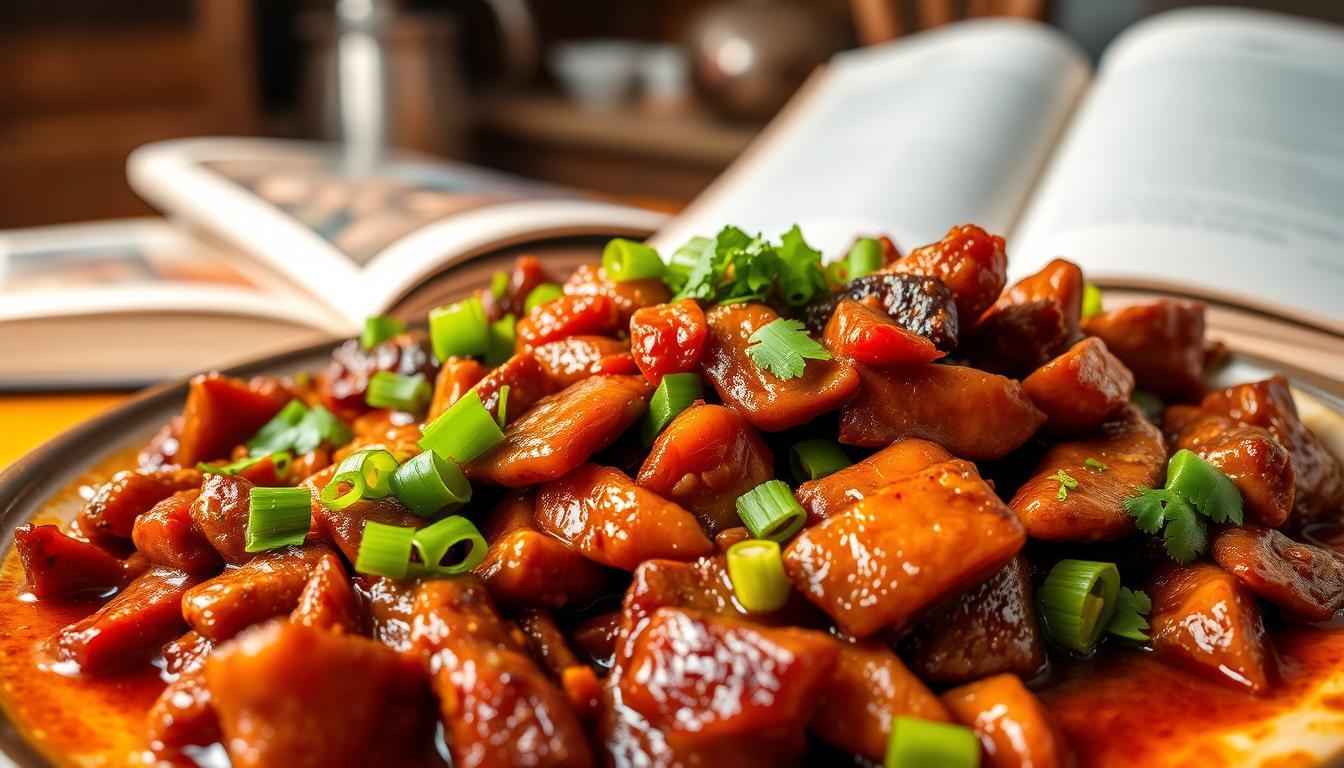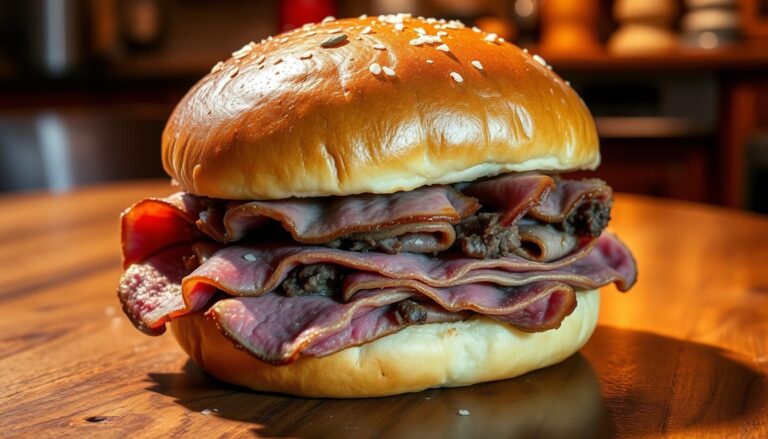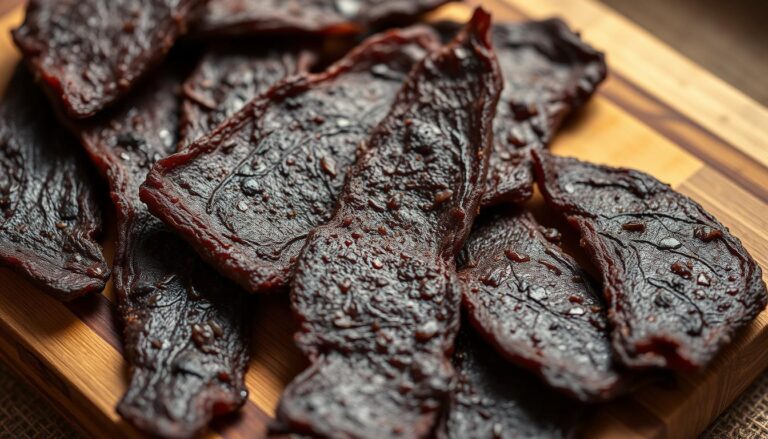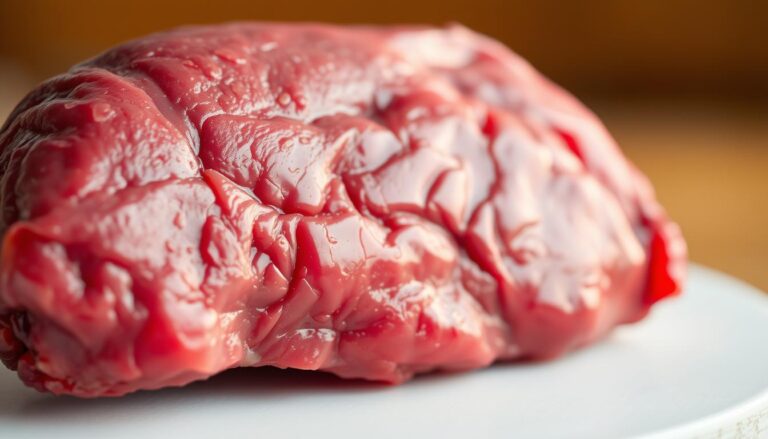Easy Recipe Szechuan Beef Full of Fiery Heat and Tangy Flavor
Table of Contents
Easy Recipe Szechuan Beef Full of Fiery Heat and Tangy Flavor
Do you love the bold flavors of Szechuan cuisine but hate going out to eat? You’re not alone. Many people adore the spicy kick and savory taste of Szechuan beef. It’s become a favorite in many American homes.
Now, you can make this beloved dish at home easily. With the right ingredients and techniques, you can bring the authentic flavors of Szechuan beef into your kitchen. This guide will show you a simple yet delicious recipe. It’s perfect for satisfying your cravings for Chinese food.
Key Takeaways
- Learn how to make authentic Szechuan beef at home.
- Discover the essential ingredients for a traditional Szechuan beef dish.
- Understand the techniques to achieve the perfect balance of spicy and savory flavors.
- Explore tips for customizing the recipe to your taste.
- Enjoy a restaurant-quality meal in the comfort of your own home.
What is Szechuan Beef?
Szechuan beef is a dish known for its numbing and spicy flavors. It’s a favorite in Chinese cuisine and loved worldwide for its bold taste. The unique sensation it gives to your taste buds is unforgettable.
A Brief Introduction to Szechuan Cuisine
Szechuan cuisine comes from the Sichuan province in southwestern China. It’s famous for its spicy and numbing flavors. Szechuan peppercorns make it numbing, while chili peppers add the heat.
This cuisine is more than spicy. It’s a mix of savory, sweet, and sour flavors. It’s a culinary adventure that’s hard to forget.
Chef Fuchsia Dunlop says, “Szechuan cuisine is not just cooking. It’s an experience of many flavors and sensations.” This mix of flavors has made Szechuan beef a favorite globally.
Key Ingredients in Szechuan Beef
The real taste of Szechuan beef comes from its ingredients. It uses tender beef, like sirloin or flank steak, marinated in soy sauce, Shaoxing wine, and cornstarch. Szechuan peppercorns, dried chilies, garlic, and ginger are stir-fried for the flavor.
Other key ingredients include scallions, chili bean paste, and sauces. These add to the umami flavor.
- Szechuan peppercorns for the numbing effect
- Dried chilies for the spicy kick
- Garlic and ginger for depth of flavor
- Soy sauce and Shaoxing wine for marination
Knowing these ingredients helps you understand Szechuan beef’s complexity. It makes cooking this dish at home easier.
The History of Szechuan Beef
Before you start cooking Szechuan beef, learning about its history can make it even more special. Szechuan beef is more than a recipe. It’s a piece of the Sichuan Province’s rich food culture in southwestern China.
Origins of Szechuan Cuisine
Szechuan cuisine comes from the Sichuan Province. The humid climate and geography shaped its flavors. For centuries, locals used salt, garlic, and chilies to keep food fresh.
These ingredients gave Szechuan food its unique taste. The mix of mala (numbing and spicy) flavors from Sichuan peppercorns and chili peppers is key to Szechuan cooking.
| Key Ingredients | Role in Szechuan Cuisine |
|---|---|
| Sichuan Peppercorns | Create the numbing sensation characteristic of Szechuan cuisine |
| Chili Peppers | Add heat and flavor to Szechuan dishes |
| Garlic | Used for preservation and to add depth to dishes |
Evolution of Szechuan Beef Dishes
Szechuan beef has changed a lot over time. Traditionally, it was stir-fried with veggies and spices, served with rice. As it spread to China and the world, it adapted to local tastes.
In the West, like the U.S., Szechuan beef became sweeter or less spicy. But, the core of Szechuan cuisine, like Sichuan peppercorns and chili peppers, stayed the same.
Knowing the history of Szechuan beef makes it even more meaningful. When you cook it, you’re part of a long tradition.
Essential Ingredients for Szechuan Beef
To make a real Szechuan beef dish, you need a few key ingredients. Szechuan beef is famous for its bold flavors and spices. Having the right ingredients is key for a authentic sichuan beef recipe.
Fresh Vegetables to Use
Fresh veggies are important in Szechuan beef. They add texture, flavor, and color. You’ll often use bell peppers, onions, scallions, and sometimes broccoli or snap peas.
Bell peppers are sweet and crunchy. Onions add depth of flavor. Scallions give a fresh onion taste. Broccoli or snap peas add green freshness.
Types of Beef for the Recipe
Choosing the right beef is important for a tender and tasty Szechuan beef dish. Good cuts are flank steak, sirloin, or ribeye. Look for tender beef with good marbling for flavor.
At the butcher, choose cuts that are bright red and have a fine texture.
| Beef Cut | Tenderness | Flavor Profile |
|---|---|---|
| Flank Steak | Moderate | Beefy, slightly lean |
| Sirloin | High | Rich, tender |
| Ribeye | High | Rich, marbled flavor |
Must-Have Spices and Sauces
The unique taste of Szechuan beef comes from its spices and sauces. You’ll need Szechuan peppercorns, dried red chilies, chili oil, soy sauce, hoisin sauce, and rice vinegar. Szechuan peppercorns give a unique numbing flavor. Dried red chilies add heat.
Chili oil makes the dish spicier. Soy sauce, hoisin sauce, and rice vinegar balance the flavors.
- Szechuan peppercorns: Unique numbing flavor
- Dried red chilies: Adds heat
- Chili oil: Enhances spiciness
- Soy sauce: Salty, savory flavor
- Hoisin sauce: Sweet, thickening agent
- Rice vinegar: Balances acidity
Kitchen Tools You Need
Preparing Szechuan beef needs more than just the right ingredients. You also need the right kitchen tools. The right tools can make a big difference in how your Szechuan beef tastes and looks.
Cooking Utensils and Equipment
You’ll need some basic cooking tools and equipment to begin. A good chef’s knife is key for slicing beef thinly. This is important for the right texture. A cutting board gives you a clean, stable place to prepare your ingredients.
Getting the measurements right is important in any recipe. That’s why measuring spoons and cups are essential. Mixing bowls are needed for marinating the beef, so it can soak up the flavors well. For stir-frying, long-handled wooden spoons or spatulas are best. They help you mix the ingredients quickly, without burning them.
Best Cookware for Szechuan Beef
Choosing the right cookware is important for Szechuan beef. A wok is traditionally used for stir-frying because it cooks evenly. If you don’t have a wok, a flat-bottomed wok works well on electric stoves. You can also use a large cast-iron skillet or a stainless-steel pan. These options are good for heat retention and distribution.
Each cookware option has its benefits. A wok cooks evenly and is great for quick stir-frying. Cast-iron skillets keep heat well, so your beef cooks consistently. Stainless-steel pans are durable and easy to clean, making them a good choice for often use.
Preparing Your Ingredients
The secret to a great Szechuan beef recipe is in how you prepare its ingredients. Doing it right makes your dish taste amazing and feel tender. It’s a true treat to eat.
How to Slice Beef for Maximum Flavor
Slicing beef right is key for flavor and tenderness. You should cut against the grain. This means slicing in the opposite direction of the muscle fibers. It makes the beef tender and easy to chew.
It’s also vital to slice the beef into thin, uniform pieces. This ensures it cooks evenly. Freezing the beef a bit helps you slice it thinly and consistently.
Prepping Vegetables for Cooking
Vegetables need just as much prep as the beef. Start by washing and drying them well. Then, cut them as your recipe needs.
For Szechuan beef, you’ll often julienne peppers, bias-cut scallions, and mince garlic and ginger. Cutting them right helps them cook evenly. This adds to the dish’s texture and flavor.
By spending time on prep, you’ll get a Szechuan beef dish that’s full of flavor and has a great texture.
Step-by-Step Recipe Instructions
To make Szechuan Beef, follow these easy steps. This guide helps you make this dish at home.
Marinating the Beef
Start by marinating the beef. Mix sliced beef with soy sauce, rice wine, and cornstarch. This makes the beef tender and flavorful. Make sure the beef is well-coated and marinate for at least 30 minutes.
“Marinating is key,” says Chef Li. “It makes the beef tender and full of flavor.”
Cooking the Beef Perfectly
Cooking the beef right is important. Heat a wok or skillet over high heat and add oil. Add the marinated beef in batches to prevent overcrowding. Cook until browned and cooked through, then set aside.
“A great Szechuan Beef needs a good sear,” experts say. “You want a nice crust without overcooking.”
Adding the Vegetables
After cooking the beef, add the vegetables. Start with garlic and ginger, then add bell peppers and broccoli. Stir-fry until tender-crisp, then add the beef back in. Mix well to coat with sauce.
Adding vegetables in the right order is important. Start with aromatics, then harder vegetables like carrots, and finish with softer ones like bell peppers.
Tips for the Perfect Szechuan Beef
Making perfect Szechuan beef is an art that needs balance and skill. To make a dish that’s both authentic and tasty, you must master a few key points.
Balancing Heat and Flavor
Szechuan beef is known for its bold taste, which comes from a mix of heat and numbing spice. To get this right, you can change the heat by using different chili peppers. For example, taking out the seeds from Szechuan peppercorns and chilies makes it less hot but keeps the flavor.
Layering ingredients is another way to add depth to the flavors. Start with garlic and ginger, then add the beef, and finish with vegetables and sauces.
Tempering the heat is key to not overpowering the dish. Use a mix of chili peppers and Szechuan peppercorns for a unique numbing feel. Try different chili peppers to find the perfect heat for you.
Best Practices for Stir-Frying
Stir-frying is a skill that takes practice. To get it right, make sure your wok is hot before adding ingredients. Mise en place is important; have everything ready before cooking. This means slicing the beef thinly and prepping the veggies.
Using the right tossing techniques is key to even heat and avoiding burns. Start with the longest-cooking ingredients, like beef, then add the veggies. By following these tips, you can make a restaurant-quality Szechuan beef dish at home.
Common Mistakes to Avoid
To get the real taste and texture of Szechuan Beef, you must avoid some common mistakes. Szechuan Beef is famous for its bold flavors and spices. Knowing what makes it special can help you avoid these errors.
Overcooking the Beef
One big mistake is overcooking the beef. Overcooked beef becomes tough and chewy, losing its tender texture. To avoid this, cook the beef slices quickly over high heat. It’s done when it’s tender but slightly firm.
Here are some tips for perfectly cooked beef:
- Slice the beef into thin strips to reduce cooking time.
- Cook the beef in a hot wok or skillet, using a thermometer to ensure the temperature is around 400°F (200°C).
- Stir-fry the beef for about 2-3 minutes, or until it changes color and is cooked through.
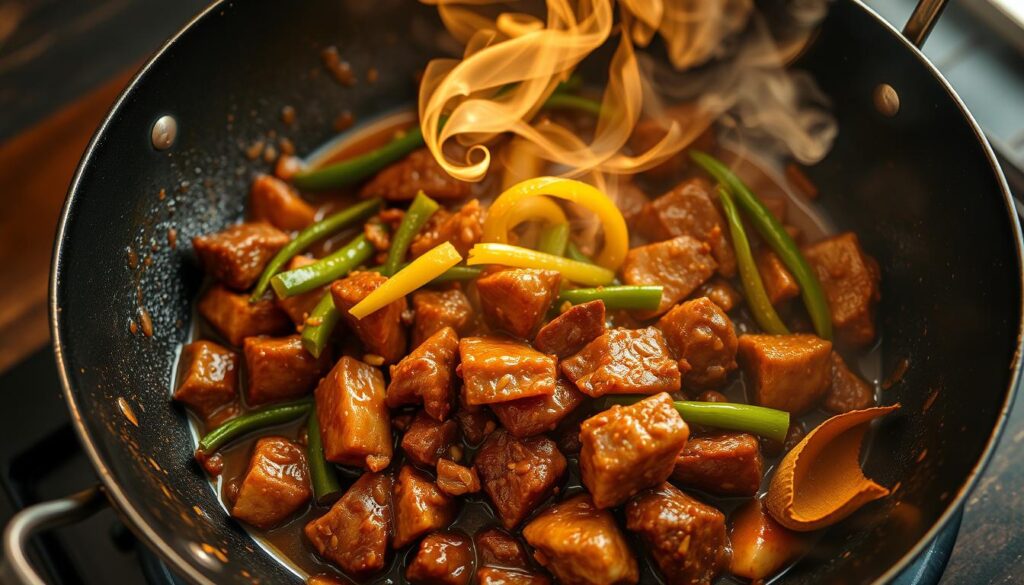
Mistakes in Seasoning
Another common problem is incorrect seasoning. Szechuan Beef needs a special mix of spices, including Szechuan peppercorns, chili peppers, garlic, and ginger. Wrong seasoning can ruin the flavor. Make sure to use the right amounts and don’t swap important ingredients.
Some seasoning mistakes to avoid include:
- Adding sauces too early or at the wrong temperature, which can cause them to burn or lose their flavor.
- Not balancing the “mala” (numbing) and “la” (spicy) flavors that are characteristic of Szechuan cuisine.
- Overusing or underusing key ingredients like soy sauce, Shaoxing wine, or chili peppers.
By watching out for these mistakes, you can make a more authentic Szechuan Beef dish. This will let you enjoy the unique flavors and techniques of this beloved cuisine.
Variations of Szechuan Beef
You can easily change the classic Szechuan beef recipe to fit your taste and diet. You can make it vegetarian or adjust the spice level. There are many ways to make Szechuan beef your own.
Vegetarian Options
Looking for a meatless Szechuan beef? Try using seitan, tofu, tempeh, or king oyster or portobello mushrooms. These can be marinated and cooked like beef, soaking up Szechuan flavors.
For instance, extra-firm tofu can be pressed and cut into cubes. Then, marinate it in soy sauce, Shaoxing wine, and cornstarch. Stir-fry it with veggies and Szechuan seasonings. Sliced portobello mushrooms can also be marinated and cooked like beef, making a great vegetarian option.
Different Spice Levels
Szechuan cuisine is known for its bold spices, like Szechuan peppercorns and chili peppers. But, you can adjust the heat to your liking. For a milder taste, reduce or omit chili peppers and Szechuan peppercorns.
If you like it spicier, add more chili peppers or try habaneros or ghost peppers. It’s key to balance the spice with other flavors for a harmonious dish.
- For a mild version, use 1-2 Szechuan peppercorns and omit chili peppers.
- For a medium version, use 1-2 dried red chilies or 1 teaspoon of chili flakes.
- For a hot version, use 3-4 dried red chilies or 2 teaspoons of chili flakes.
By tweaking the spice and trying vegetarian options, you can make a Szechuan beef recipe that’s just right for you. It’s a versatile and exciting dish to cook and enjoy.
Serving Suggestions
Serving Szechuan beef with the right sides can make your meal better. The secret is to find the right balance between the main dish and its sides.
Pairing with Rice or Noodles
There are many ways to pair Szechuan beef with starches. You can pick from jasmine, long-grain white, or brown rice. Each type has its own taste and texture.
Jasmine rice is fragrant and fluffy, which goes well with Szechuan beef. Long-grain white rice is neutral, letting the beef’s taste stand out. Brown rice adds a nutty taste and more fiber, making it healthier.
Noodles are also great with Szechuan beef. Lo mein, rice noodles, and udon noodles are all good choices. Lo mein noodles are chewy and pair well with stir-fried beef and veggies. Rice noodles are gluten-free and light, contrasting the rich beef. Udon noodles are thick and can handle the bold flavors of Szechuan beef.
Garnishing Ideas for Presentation
Garnishing your Szechuan beef makes it look better and adds flavor. Use thinly sliced scallions, toasted sesame seeds, or fresh cilantro for color and freshness. Crushed peanuts add crunch, and a drizzle of chili oil brings heat.
For a fancy look, serve your Szechuan beef in a family-style dish or individual plates. Arrange the beef and veggies neatly and garnish with your chosen items. This makes your meal not just tasty but also beautiful.
Storing and Reheating Leftovers
To avoid waste and keep flavors strong, it’s key to know how to store leftover Szechuan beef. Whether you’ve cooked a big batch or have some left over from dinner, the right storage and reheating methods are vital.
Storage Containers and Refrigeration
Keeping leftover Szechuan beef fresh is all about preventing moisture loss. First, cool the dish to room temperature to stop bacteria from growing. Then, put it in an airtight container, separating the beef from the veggies if you can.
Choose shallow, airtight containers for storing your Szechuan beef. This quick cooling method stops bacteria growth. You can keep it in the fridge for up to 3 days. For longer, freeze it for up to 3 months.
Reheating Techniques
When reheating Szechuan beef, it’s important to keep its texture and taste. You have three main ways: microwave, stovetop, and oven.
- Microwave Reheating: Cover the dish to keep moisture in and heat in short bursts, stirring each time.
- Stovetop Reheating: Heat over low heat, stirring often, until it’s warm. Adding oil or sauce can refresh the flavors.
- Oven Reheating: Cover with foil and heat in a 300°F (150°C) oven until warm. This method keeps moisture in.
To boost the flavors of your reheated Szechuan beef, add fresh garnishes like green onions or soy sauce. This not only improves taste but also looks better.
By using these storage and reheating tips, you can enjoy your Szechuan beef recipe again and again. This makes your cooking efforts worthwhile.
Nutritional Information
Knowing the nutritional value of Szechuan beef helps you make better diet choices. This dish not only delights your taste buds but also offers many nutrients.
Protein and Nutrient Breakdown
Szechuan beef is packed with high-quality protein from the beef and vitamins and minerals from the veggies. It’s rich in vitamins A and C, iron, and potassium, thanks to the ingredients. The spices, like ginger and garlic, add health benefits, including fighting inflammation.
But, it’s key to watch out for the sodium from soy sauce and seasonings. To make it healthier, use less salt and choose low-sodium options.
Caloric Content and Serving Size
A standard serving of Szechuan beef is about 1 cup or 3 ounces of cooked beef with veggies. The calories vary by ingredients and portion, but it’s roughly 250 to 350 calories per serving.
Here’s a detailed nutritional breakdown per serving: Calories: 300, Protein: 25g, Fat: 15g, Carbohydrates: 20g, Fiber: 5g. You can adjust the recipe to fit your diet by choosing leaner beef, using less oil, and adding more veggies.

Frequently Asked Questions
When exploring Szechuan Beef recipes, you might wonder about the spice level and how to adjust ingredients. Szechuan Beef is famous for its bold flavors and spicy kick. Knowing how to adjust the heat and ingredients can make cooking more fun.
The Spice Level of Szechuan Beef
Szechuan Beef is known for its unique numbing sensation from Szechuan peppercorns and spicy heat from chilies. You can adjust the spice level to your liking by changing the amount of chilies or Szechuan peppercorns. For a milder dish, try reducing or removing the seeds and membranes of the chilies, where most of the heat is.
Substituting Ingredients in Szechuan Beef
Traditional Szechuan Beef recipes use specific ingredients, but you can make substitutions based on what you have or what you prefer. For example, if you can’t find Szechuan peppercorns, you can skip them or use a mix of black pepper and coriander seeds. You can also swap out the beef for different cuts like flank steak or ribeye, adjusting the cooking time as needed.
Remember, substituting ingredients might change the dish’s authenticity and flavor a bit. But, you can make a tasty and satisfying sichuan beef recipe even with changes.
Finding the Right Balance
The secret to loving Szechuan Beef is finding the perfect mix of flavors. You need to tweak the spice, sweetness, saltiness, and texture to match your taste. This makes the dish just right for you.
Adjusting for Personal Taste
To make Szechuan Beef your way, tweak a few things. Want it spicier? Add more Szechuan peppercorns or chili peppers. For a milder taste, cut back or skip these. Adjust the sweetness by changing sugar or adding hoisin sauce. Control the salt by tweaking soy sauce or salt.
| Adjustment | For Spicier | For Milder | For Sweeter | For Saltier |
|---|---|---|---|---|
| Szechuan Peppercorns | Increase | Reduce/ Omit | No Change | No Change |
| Chili Peppers | Add More | Reduce/ Omit | No Change | No Change |
| Sugar/Hoisin Sauce | No Change | No Change | Increase | No Change |
| Soy Sauce/Salt | No Change | No Change | No Change | Adjust |
Making it Kid-Friendly
To make Szechuan Beef kid-friendly, tone down the spice. You can set aside some before adding spicy stuff. Or, make a mild sauce and add spicy bits on the side. Adding familiar flavors can also help.
By making these tweaks, you can enjoy Szechuan Beef just the way you like it. Or, it can be a hit with the whole family, even the kids.
Exploring Szechuan Cuisine Beyond Beef
Szechuan cuisine is full of flavors and dishes to discover. You’ve enjoyed cooking and eating Szechuan beef. Now, you’re ready to try more of what Szechuan cuisine offers.
Other Popular Dishes to Try
Szechuan cuisine is known for its diverse and vibrant dishes. Each dish shows a unique part of its culinary traditions. You might like Mapo Tofu, a spicy dish with tofu, ground meat, and spices.
Kung Pao Chicken is another favorite. It’s a stir-fry with chicken, peanuts, veggies, and chili peppers. Dan Dan Noodles feature a spicy sauce with Szechuan peppercorns, chili oil, and fermented bean paste. Lastly, Twice-Cooked Pork is a classic dish with pork belly cooked twice, first braised and then stir-fried with veggies and spices.
These dishes show the complexity and depth of Szechuan flavors. They also show how versatile Szechuan cuisine is, with something for everyone.
Szechuan Sauces and Condiments
Szechuan cuisine is known for its sauces and condiments. These add depth and complexity to dishes. Chili oil is a staple, made by infusing oil with chili peppers. It adds a spicy kick.
Doubanjiang, or fermented broad bean paste, is another key ingredient. It adds a savory, umami flavor. Various pickled vegetables are also used, adding a tangy, sour taste.
“The essence of Szechuan cuisine lies in its bold flavors and the harmonious balance of its various components.”
You can make some of these condiments at home. For example, chili oil is made by heating oil and pouring it over chili flakes. Trying these sauces and condiments can make your Szechuan cooking more authentic and flavorful.
Conclusion
Now you know how to make Szechuan beef. It’s time to serve it at your table. With the right ingredients and techniques, you can make a dish that rivals restaurants.
We’ve gone over the key ingredients, tools, and steps to make an authentic Szechuan beef recipe. You can tweak the heat and flavor to your liking. This makes it a favorite in your kitchen.
Sharing the Flavors of Szechuan
Don’t just stop at Szechuan beef. Host a Szechuan-themed dinner party and share it with loved ones. Serve it with steamed rice or noodles and other Szechuan dishes for a memorable meal.
Try out different Szechuan sauces and condiments to mix things up. With these tips, you’ll be on your way to a real Szechuan dining experience at home. Enjoy your delicious Szechuan beef recipe.
FAQ
What is Szechuan beef?
How spicy is Szechuan beef?
Can I substitute ingredients in Szechuan beef?
What type of beef is best for Szechuan beef?
How do I slice beef for Szechuan beef?
Can I make Szechuan beef without Szechuan peppercorns?
What are some common mistakes to avoid when making Szechuan beef?
How do I store and reheat leftover Szechuan beef?
Can I make Szechuan beef vegetarian?
How do I adjust the spice level in Szechuan beef?
What are some serving suggestions for Szechuan beef?
What is the nutritional content of Szechuan beef?
Can I make Szechuan beef kid-friendly?
What other Szechuan dishes can I try?
How do I make Szechuan sauces and condiments?
Can I use Szechuan beef recipe for other proteins?
For more cooking tips, stay connected with us. We also recommend the cookbook Skinnytaste Simple: Easy, Healthy Recipes with 7 Ingredients or Fewer
For more Recipes about Beef?
Did You try our recipe ?
There are no reviews yet. Be the first one to write one.
